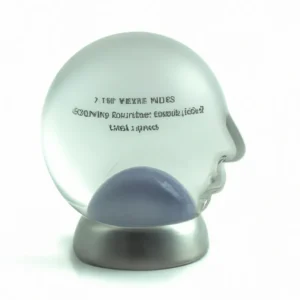The Evolution of Athletic Footwear: How Technology and Design are Shaping Performance and Injury Prevention
# The Evolution of Athletic Footwear: How Technology and Design are Shaping Performance and Injury Prevention
In the world of sports and fitness, the right footwear can be the difference between peak performance and injury. Athletic footwear has evolved dramatically over the decades, shaped by advancements in technology, innovative design, and a deeper understanding of biomechanics. From the early days of basic canvas shoes to today’s high-tech sneakers equipped with smart technology, the evolution of athletic footwear reflects not only the progress of manufacturing techniques but also the changing needs of athletes and everyday fitness enthusiasts. This blog post explores the key advancements in athletic footwear, the interplay of design and technology, and how these elements contribute to improved performance and injury prevention.
## The Historical Context of Athletic Footwear
### From Barefoot to Basic Designs
The history of athletic footwear dates back to ancient civilizations, where athletes often competed barefoot or with rudimentary sandals. As the modern Olympics gained popularity in the late 19th century, the need for specialized footwear became apparent. Early athletic shoes were often simple designs made from leather or canvas, providing minimal support and cushioning.
### The Rise of Technology in Footwear
The 1970s marked a significant turning point in athletic footwear with the introduction of innovative materials and technologies. The development of EVA (ethylene-vinyl acetate) foam revolutionized cushioning, providing runners with a lightweight yet shock-absorbing sole. This period also saw the establishment of major brands dedicated to performance footwear, which began to invest heavily in research and development.
## Innovative Design Features
### Cushioning Systems
Modern athletic shoes often incorporate complex cushioning systems designed to absorb impact and enhance comfort. Brands utilize various technologies, such as air pockets, gel inserts, and responsive foams, to create shoes that cater to different types of athletes. The appropriate cushioning can significantly reduce the risk of injuries like stress fractures and plantar fasciitis.
### Support and Stability
Another crucial aspect of athletic footwear design is support and stability. Technologies such as arch support and heel counters are integrated to provide proper alignment and prevent overpronation or supination. Athletes can choose shoes tailored to their foot types and playing styles, ensuring optimal performance and minimizing injury risk.
### Breathability and Weight
Advancements in materials have also led to lighter and more breathable shoes. Mesh uppers allow for ventilation, keeping feet cool during intense workouts. Lightweight materials reduce fatigue, enabling athletes to perform at their best for longer durations.
## Nutrition Tips for Optimal Performance
Proper nutrition is essential for maximizing the benefits of high-quality athletic footwear. Here are some tips to consider:
– **Stay Hydrated**: Dehydration can lead to decreased performance and increased risk of injury. Aim to drink water before, during, and after exercise.
– **Fuel with Carbohydrates**: Carbohydrates provide the necessary energy for high-intensity workouts. Incorporate whole grains, fruits, and vegetables into your diet.
– **Include Protein**: Adequate protein intake is vital for muscle repair and recovery. Include lean meats, dairy, legumes, and nuts in your meals.
– **Don’t Skip the Micronutrients**: Vitamins and minerals are crucial for overall health. Focus on a balanced diet rich in colorful fruits and vegetables.
## Exercise Advice for Injury Prevention
In conjunction with wearing the right footwear, following proper exercise techniques can further reduce the risk of injuries. Consider these tips:
– **Warm-Up and Cool Down**: Always start with a warm-up to prepare your muscles for activity, and cool down afterward to aid recovery.
– **Gradual Progression**: Avoid sudden increases in workout intensity or duration. Gradually build your stamina to prevent overuse injuries.
– **Cross-Training**: Engage in various forms of exercise to balance muscle development and prevent repetitive strain on specific body parts.
– **Listen to Your Body**: Pay attention to any signs of discomfort or pain. Ignoring these signals can lead to serious injuries.
## Health Benefits of Proper Athletic Footwear
Investing in quality athletic footwear has numerous health benefits:
– **Reduced Injury Risk**: Properly designed shoes minimize the impact on joints and provide support, significantly reducing the likelihood of injuries.
– **Enhanced Performance**: Shoes engineered for specific activities can improve traction, stability, and comfort, allowing athletes to perform at their highest potential.
– **Improved Posture**: Well-designed footwear promotes better alignment and posture, which can lead to overall improved body mechanics.
– **Increased Motivation**















Post Comment